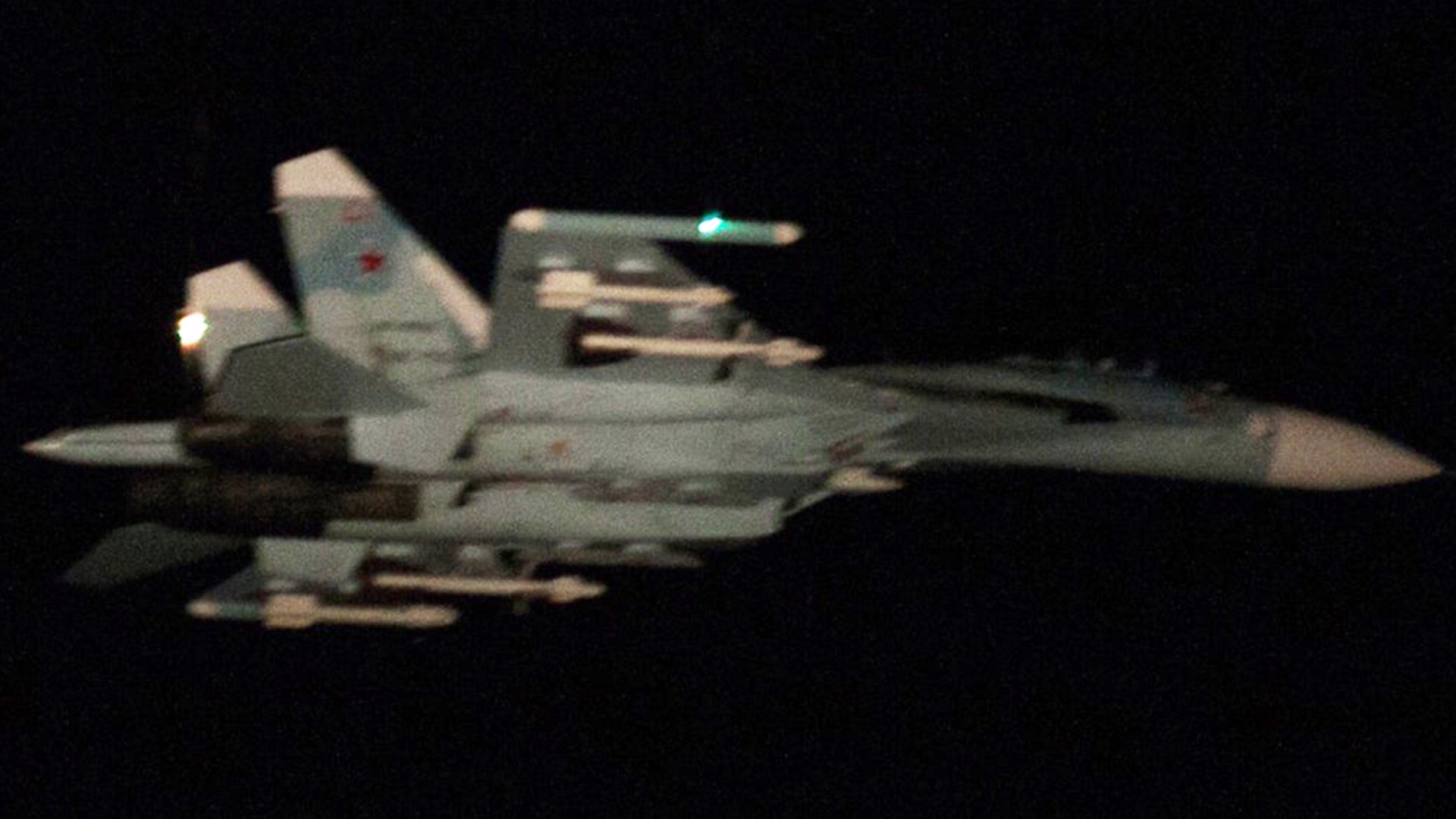Russia’s “extra territorial” military aviation activity has been relentless since the invasion of Crimea. Countless intercepts, territorial violations, and boundary-skirting bomber patrols have occurred in the last two and a half years. Northern Europe and the Baltic Sea region in particular has become some of the tensest airspace in the world. Russian tactical jets roam the area with a penchant for testing boundaries and area defenses, and spy aircraft from both sides transit the area regularly, sometimes with their transponders shut off. Just yesterday a pair of armed Russian Su-27 Flankers supposedly ventured into Finland’s airspace, and Finnish F/A-18s were scrambled to intercept.
The first scramble occurred around 4:30pm local time–when an armed Russian Su-27 approached Finnish territory over the Gulf of Finland. According to the Finnish government, the jet eventually breached their airspace, entering about a kilometer into it for a brief amount of time. Finland’s F/A-18C/D aircrews snapped this shot of the afternoon encounter:
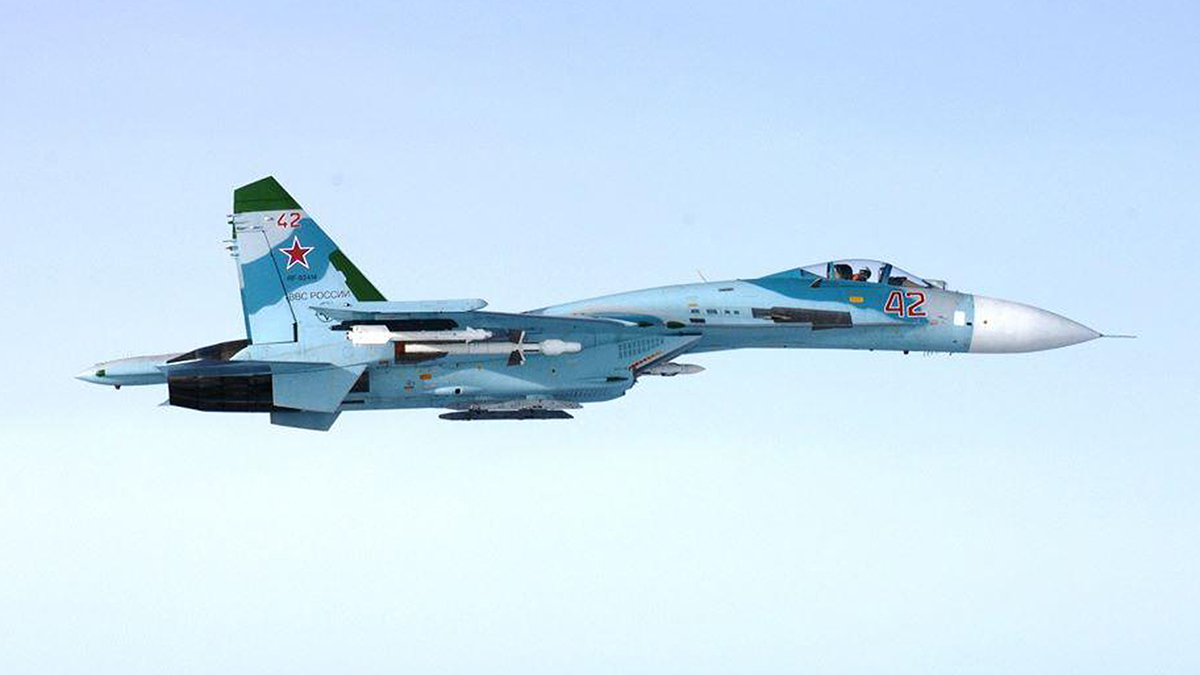
Later that evening, around 11:30pm, Finland had to scramble Hornets again. The jets executed a nighttime intercept on a target flying along its border. Once again it was a Russian Su-27 variant–fully armed, this time sporting Sorbtsiya-S electronic warfare pods on its wingtips. Here is a shot from the encounter:
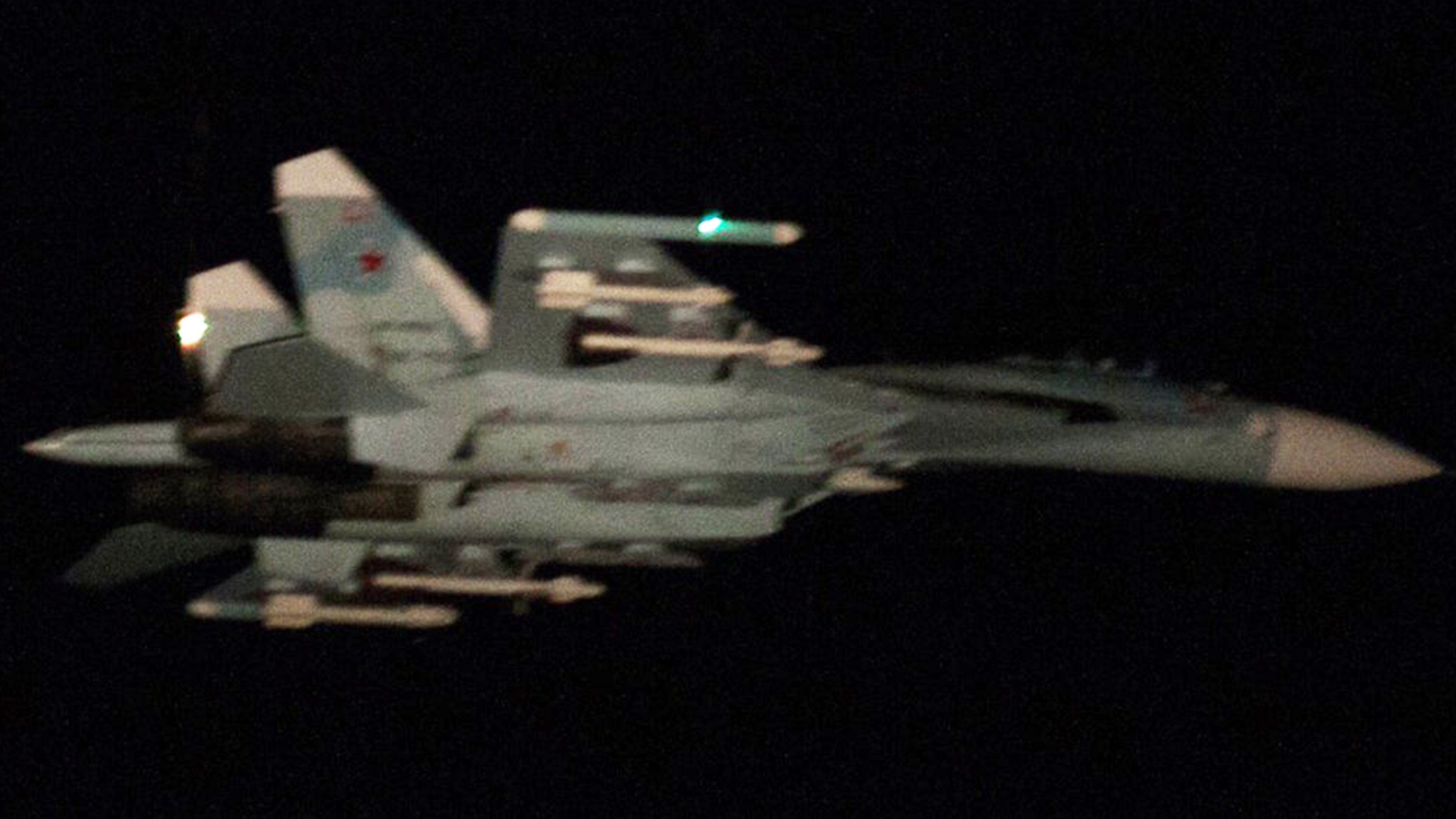
The Finnish F/A-18 crew was able to take this awesome, if somewhat eerie picture of the Flanker because their Hornets are equipped with a port-side intercept spotlight. Canada’s CF-18s were also delivered with this useful feature, as were a handful of other modern fighters, such as Norwegian and Dutch F-16s. Handy as was over the Gulf of Finland, the integration of night vision goggles and infrared targeting pods is so common on western fighters, the intercept spotlight’s utility has somewhat waned.
When it comes to air defense, the country’s F/A-18C/D Hornets are some of the most capable and youngest “legacy” Hornets in the world, and have seen constant upgrades over their lifetime. Finland leverages the F/A-18’s hardy, navalized design for short field and austere operations. The jets can operate in very small groups from short and narrow stretches of highway, using the F/A-18’s tailhook and a mobile arresting cable system to drastically shorten landing roll distance. These operations are also a staple in nearby Sweden, and it is a manifestation of how both countries have prepared to independently defend themselves–and even survive the onslaught of foreign powers–over the decades.

Just hours after these intercepts occurred, Estonia says a similar Russian jet also violated their airspace. This separate incident occurred at 2:38AM local time, when the aircraft appeared over the Baltic Sea with its transponder turned off. Like the incidents earlier that day in Finland, the Russian fighter was only in Estonian airspace for a minute or so.
Finland’s defense minister Jussi Niinisto stated the following in response to the Russian incursion: “We take these incidents seriously. Having two suspected violation on the same day is exceptional.” He also made note that past violations had been mostly made by cargo (surveillance) planes, not high-end, armed fighters.
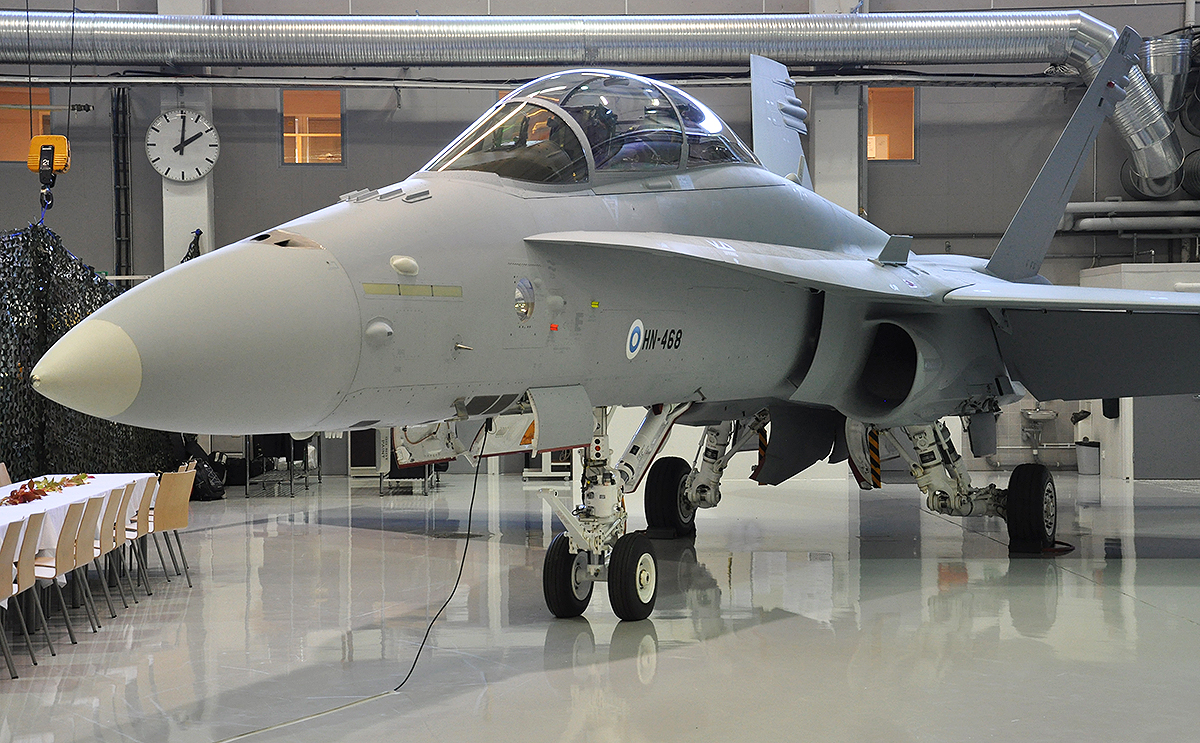
Long before tensions increased with Russia in 2014, Northern Europe was a Cold War hotspot. NATO kept a close eye on Russia’s military operations in the area, with an especially sharp focus on monitoring Russia’s master navy base at Severomorsk–home of the Northern Fleet–as well as movements on and over the Baltic Sea.
Finland and its neighbor Sweden are not members of NATO; but over the last two and a half years, as the security situation in the region continued to deteriorate, both nations have become more allied with NATO than ever before. This shift has included the execution of large multi-national military drills–hosted by both Sweden and Finland–with NATO and the US playing a central part in those exercises. The two Scandinavian nations have also participated in key NATO conferences. There has been talk of both countries joining NATO, although time will tell if this becomes a reality for either. Of course, Moscow is not pleased with any of this.
Hours ago, Finland signed a new security pact with the US which includes increased joint training and large-scale exercises, as well as deeper intelligence sharing. With this in mind, the appearance of armed Flankers on–and even within–Finland’s borders just before such an agreement is not a random act. Far from it: It was almost certainly Moscow’s way of reminding Helsinki not just who their neighbor is, but what they are capable of. A clear sign that the closer Finland gets to NATO and the US, the more Russia will make them pay for doing so.
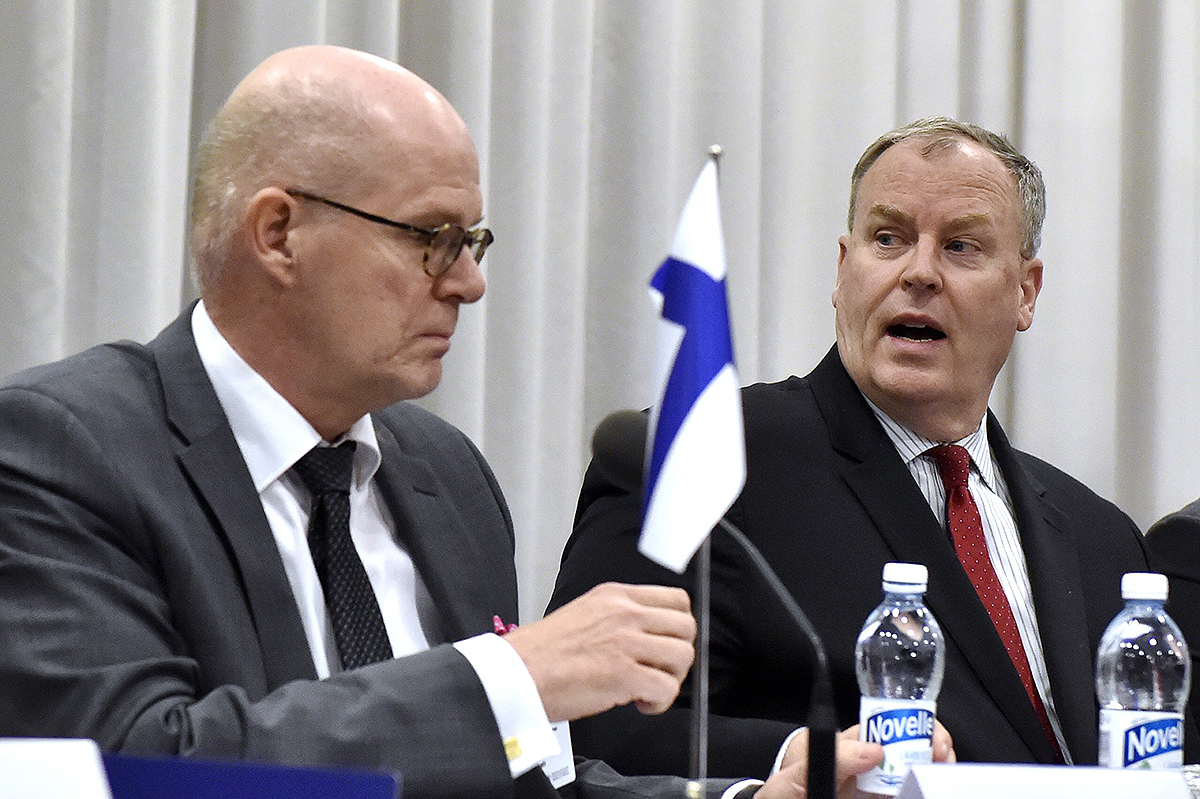
As for the Russia’s response to the claimed airspace incursion, here is the Kremlin’s statement:
“The plane did not veer off its route during the flight, which is confirmed by data of the control monitor system.”
Contact the author Tyler@thedrive.com
